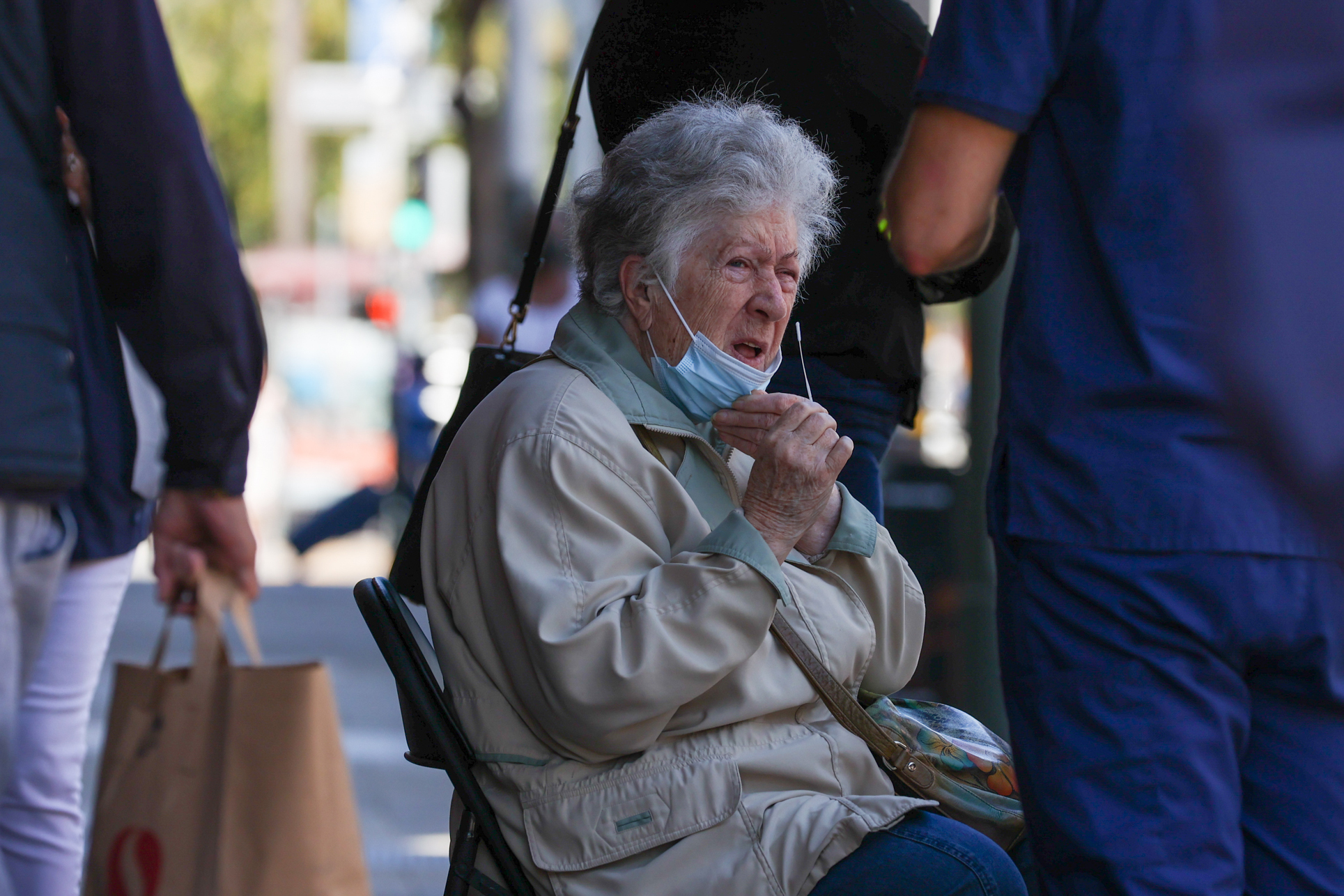San Francisco is seeing its second-biggest wave of new Covid infections since the pandemic began.
That’s according to UC San Francisco Department of Medicine Chair Dr. Bob Wachter, a local Covid guru who’s sounding the alarm about “a big-time surge” sweeping through the city.
The numbers seem to back his claim.
SF’s seven-day average for new cases recently hit 498—the second-highest of the pandemic next to last winter’s Omicron surge. That doesn’t take into account the large number of people diagnosed as positive through home tests that do not appear in the early numbers.
The average test-positivity rate in San Francisco—an indication of the level of community spread—has now reached 11.5%. Every neighborhood in the city has a test-positivity rate over 6%, which hovers around the same levels as during the Delta surge.
Hospitalizations are creeping up, too.
As of May 26, the city recorded 98 Covid hospitalizations, including 10 people in the ICU. There have been nine deaths in May thus far, according to city data, compared to 74 deaths in February during the peak of the first Omicron wave.
“We can call it a surge, but it’s a different kind of surge than the ones we’ve seen in the past,” said Dr. Peter Chin-Hong, a UCSF infectious disease expert. “We normally think of cases leading to hospitalizations, and stressing and overwhelming hospitals, but I don’t think we’re going to get to the state we were like in January or during the Delta wave.”
The current surge is being driven by the spread of BA.2.12.1, a subvariant of the virus that has emerged as the most common Covid strain in the country and in the four-state, six-territory region that includes California. The strain has proved more infectious than previous strains and more adept at evading immune defenses. However, it hasn’t been shown to cause more serious illness than previous Omicron variants.
Chin-Hong said 41 people are currently hospitalized at UCSF; one is on a ventilator. In January, the number was 152 patients with around a dozen on ventilation. He said the rate of community spread also means that around 1 in 20 patients are testing positive without symptoms when admitted for other reasons.
As opposed to previous waves of the virus, the current surge is centered around the Bay Area. Out of the 10 counties in California with the highest number of average new cases per capita Bay Area counties make up eight: San Francisco, Santa Clara, San Mateo, Solano, Marin, Sonoma, Contra Costa and Alameda.
San Francisco has the second-highest number of new Covid cases when adjusted by population. Its rate of 56 per 100,000 people is second in the state, behind only Del Norte County.
Some experts have theorized that San Francisco’s waning immunity from previous infections and vaccinations, as well as the return of crowded events, have led to the current wave.
“In some ways it’s simple,” Chin-Hong said. “People here didn’t get it before and they are getting it now. We just have more people coming to the Bay Area for events and festivals like Bottle Rock, while at the same time we don’t have public health measures in place to protect the whole population. Although I don’t think those measures have wide support anyways.”
In order to be prepared for potential infection, Chin-Hong recommended staying vigilant about masking and other protective measures when in risky situations like being indoors with poor ventilation.
One piece of good news is the wider availability of Paxlovid, the oral antiviral therapy meant to keep high-risk patients infected with Covid out of the hospital. While public health experts have warned of “Covid rebound” after the five-day course of Paxlovid has been completed, those resurgent symptoms are generally milder.
“We’re getting into the season of graduations and having multi-generational groups together,” Chin-Hong noted. So, knowing how to get Paxlovid prescribed and supplied, he added, “is a good move.”
